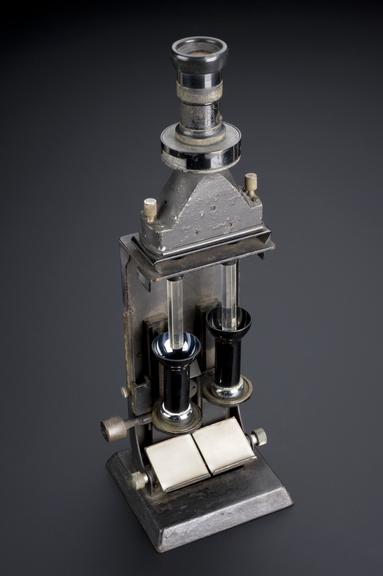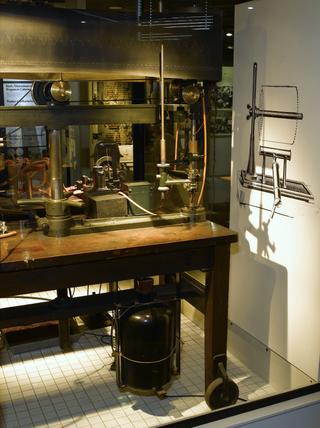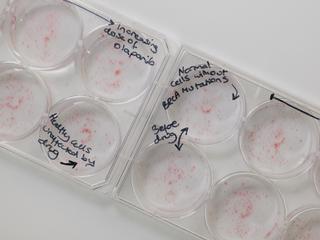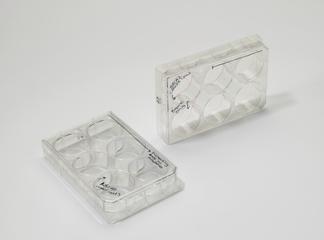
Duboscq colorimeter, Germany, 1901-1914
- Made:
- 1901-1914 in Freiburg district

Duboscq colorimeter, steel frame, by F. Hellige and Co., Freiburg, Germany, 1901-1914
A colorimeter compares colours of samples with standard colours during chemical analysis to determine the concentration of a sample. Samples are viewed through a monocular microscope. The Duboscq colorimeter was used in urine analysis and later blood analysis to determine concentrations of its components in physiological laboratories and medical diagnosis.
Jules Duboscq (1817-86), a French optical instrument maker, invented this type of colorimeter in 1854. It was one of the earliest colorimeters and proved to be one of the most popular.
Details
- Category:
- Laboratory Medicine
- Object Number:
- 1980-381
- Materials:
- steel (metal), glass, brass (copper, zinc alloy) and complete
- Measurements:
-
overall: 375 mm x 120 mm x 120 mm, 2.82 kg
depth: 107mm
height: 370mm
weight: 2.76kg
weight: 6.08479lbs
width: 132mm
- type:
- colorimeter
- credit:
- Royal College of Pathologists




